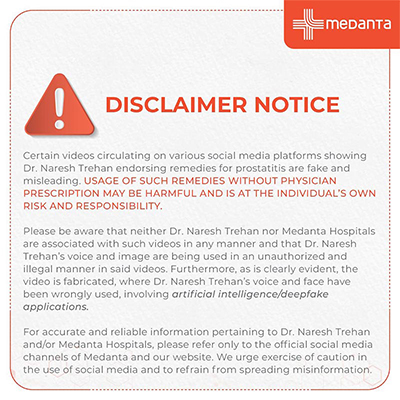Understanding Preterm Labour: Causes, Symptoms, and How to Prevent It

TABLE OF CONTENTS
- What is Preterm Labour and When Does It Start?
- Leading Causes of Preterm Birth You Should Know
- Early Signs and Symptoms of Premature Labour
- Diagnosis and Monitoring Techniques
- Treatment Options to Delay Preterm Delivery
- Lifestyle Adjustments That Can Help
- When to Go to the Hospital for Preterm Signs
- Conclusion
- FAQs
Each year, millions of babies worldwide arrive too early. A baby's arrival before completing 37 weeks in the womb, rather than the full 40-week experience, indicates preterm labour.
India faces a significant challenge with this issue.
Babies who arrive too soon need special care in neonatal intensive care units and face greater health risks. Their chances of developing complications increase the earlier they arrive during pregnancy.
Early labour can start due to various reasons. The uterus and cervix experience extra strain in women carrying multiple babies. Women who experienced preterm labour before have higher chances of facing it again. The reproductive system's infections can cause inflammation that triggers early contractions. Medical conditions such as diabetes also play a role in this issue.
Doctors can help both mother and baby better if they detect symptoms early. These warning signs include regular contractions, changes in vaginal discharge, pelvic pressure, backaches and stomach cramps.
What is Preterm Labour and When Does It Start?
Your body starts the birth process too early in preterm labour. This happens when regular contractions begin to open your cervix before 37 weeks of pregnancy. A typical full-term pregnancy lasts about 40 weeks from the first day of your last menstrual period.
Labour marks the start of birth with muscle contractions in your uterus and possibly your water breaking. Your pregnancy enters preterm labour if these signs show up before week 37.
Many people don't realise that early labour doesn't always lead to premature birth. Medical studies show that 30-50% of women with preterm labour deliver their babies at full term. You still need to get medical help right away.
Your baby's health depends largely on the timing of delivery. Earlier births come with greater health risks. Premature babies need special care in neonatal intensive care units. They might face health challenges right away and later in life.
Quick action makes a real difference in your pregnancy's outcome when you spot preterm labour signs early.
Leading Causes of Preterm Birth You Should Know
Your chances of delivering early increase due to several factors. These include:
Previous preterm births raise this risk substantially.
Twin pregnancies strain the uterus more, and over 50% of twins arrive prematurely.
Urinary tract or reproductive system infections often trigger early contractions.
Medical conditions like diabetes, high blood pressure, and cervical abnormalities also play a vital role.
Early Signs and Symptoms of Premature Labour
The early symptoms of premature labour are:
Regular contractions (six or more per hour) that continue despite changing positions
A dull backache below your waistline.
The pelvic area often feels pressure that comes and goes.
Changes in vaginal discharge need attention, especially if it becomes watery, bloody, or mucus-filled.
Stomach cramps and diarrhoea could indicate early labour.
Diagnosis and Monitoring Techniques
Physical exam: Your doctor will check cervical changes through pelvic exams.
Ultrasound: Doctors use transvaginal ultrasounds to measure cervical length—anything less than 25mm shows a higher risk. Special monitors track how often contractions happen and how long they last.
Lab tests check for substances like fibronectin that connect the foetal sac to the uterine lining.
Treatment Options to Delay Preterm Delivery
Medications:
Your doctor might use tocolytics to slow contractions temporarily and buy valuable time.
Corticosteroid shots help your baby's lungs develop faster.
Magnesium sulphate protects your baby's brain development before 32 weeks.
Doctors prescribe antibiotics if infections start during labour.
High-risk women, especially those with short cervixes, benefit from progesterone supplements.
Cervical cerclage: Women with cervical weaknesses might need cervical cerclage—a procedure that stitches the cervix closed.
Lifestyle Adjustments That Can Help
Your diet should include plenty of fruits, vegetables, and whole grains.
Doctor-approved physical activity reduces preterm risks.
Stay away from smoking, alcohol, and recreational drugs.
Meditation and other stress management techniques help you stay relaxed.
Reach a healthy weight before pregnancy and put on the right amount of weight while pregnant.
Your body needs at least 18 months between pregnancies.
When to Go to the Hospital for Preterm Signs
Get medical help right away if:
Contractions occur six or more times per hour.
Don't delay if your water breaks or you notice vaginal bleeding.
You have persistent back pain, unusual discharge, or intense pelvic pressure.
Listen to your body—medical attention is needed if something feels wrong.
Conclusion
Preterm labour remains a most important concern for expectant mothers worldwide. Medical science hasn't fully explained why some pregnancies end early, but understanding the warning signs definitely helps reduce risks. Doctors can intervene quickly when they recognise symptoms like regular contractions, backaches, and changes in vaginal discharge.
Higher risks exist for women with previous preterm births, multiple pregnancies, or certain health conditions, but healthy outcomes are still possible. Medical tools like tocolytics, corticosteroids, and progesterone supplements are a great way to get support when needed.
Prevention works better than treatment. A healthy pregnancy depends on regular prenatal visits, proper hydration, balanced nutrition, and approved exercise. Your baby's full development benefits from smart lifestyle choices - avoiding tobacco, alcohol, and managing stress.
Keep in mind that all but one of these women who experience preterm labour symptoms deliver at full term. Any sign of early labour needs immediate medical attention, but panic won't help. You should trust your body's signals and your healthcare team's expertise.
Your pregnancy experience needs protection and care. You give your baby the best chance for those final vital weeks of development by staying alert to warning signs and following preventive measures. Quick action and awareness remain your strongest allies against preterm birth challenges.
FAQs
Can bed rest really stop preterm labour?
Medical organisations no longer recommend bed rest, though it was a common suggestion in the past. Research shows it doesn't prevent preterm birth. Extended periods in bed actually raise your risk of blood clots, muscle weakness, and emotional distress. The American College of Obstetricians and Gynaecologists makes it clear that bed rest hasn't shown any benefits in preventing early delivery.
Who is most at risk for premature delivery?
Your chances of early delivery increase significantly if you've had a premature baby before. Half of all women carrying twins or multiples experience preterm birth. Several other risk factors play a role:
A short cervix
Age below 17 or above 35
Certain infections (urinary tract, STIs)
High blood pressure or diabetes
Black or Native American heritage
How many weeks can doctors delay labour safely?
Medications called tocolytics can help doctors delay labour up to 48 hours. This delay gives time to administer crucial treatments like corticosteroids that boost the baby's lung development. Most doctors let labour progress naturally after 34 weeks since the risks to the baby decrease.
What treatments help strengthen the cervix?
Women with cervical weaknesses benefit from cervical cerclage—a procedure that stitches the cervix closed. Those diagnosed with short cervixes before 24 weeks respond well to progesterone supplements. Regular prenatal monitoring helps start these treatments early enough to work effectively.
Can dehydration or stress trigger early labour?
Not drinking enough water can trigger contractions. Your body produces vasopressin at the time of dehydration, which chemically looks like oxytocin—the hormone that causes labour. High stress levels release hormones that might start preterm labour. You can prevent dehydration-related contractions by drinking enough water to maintain pale yellow urine.






